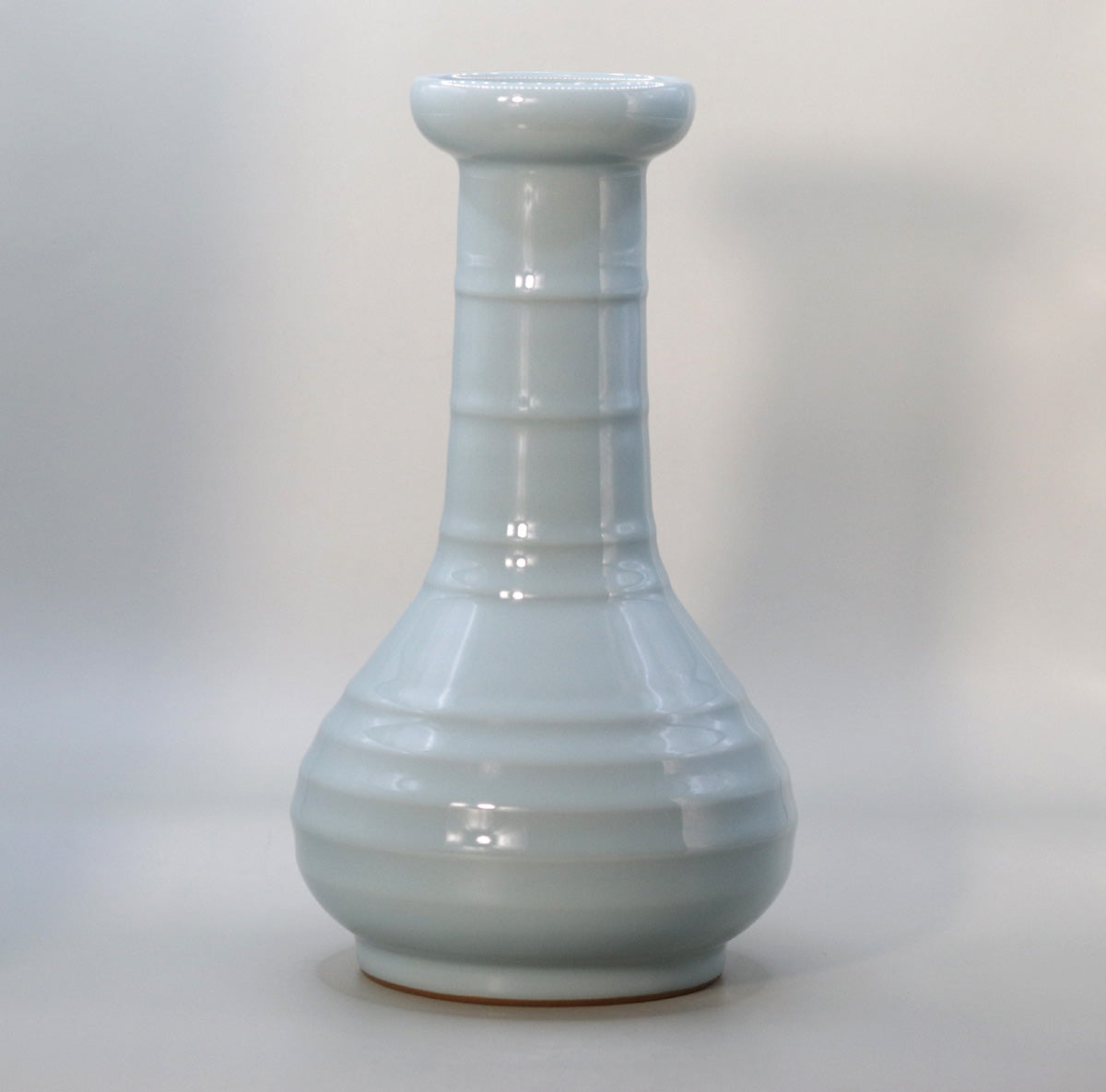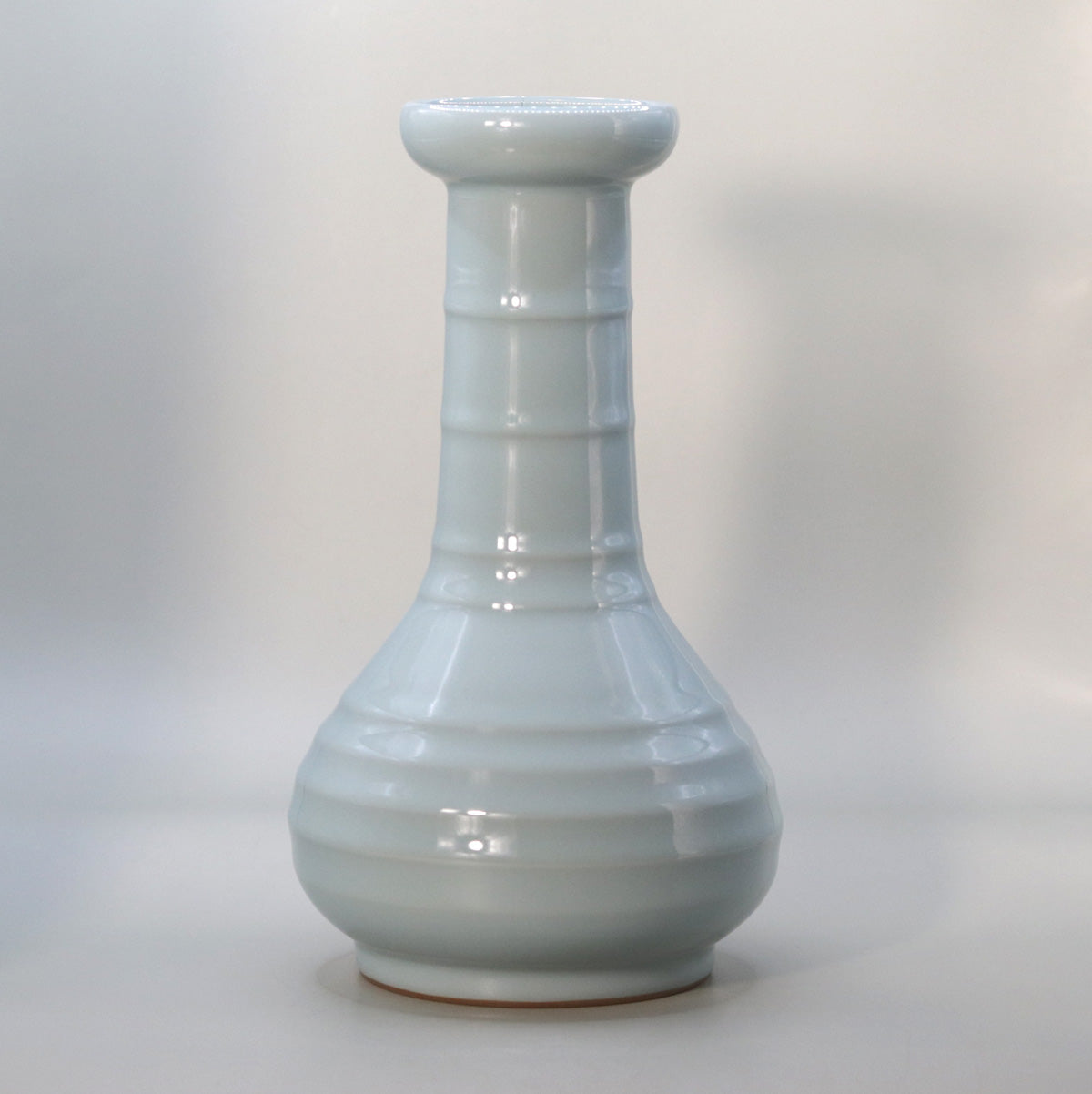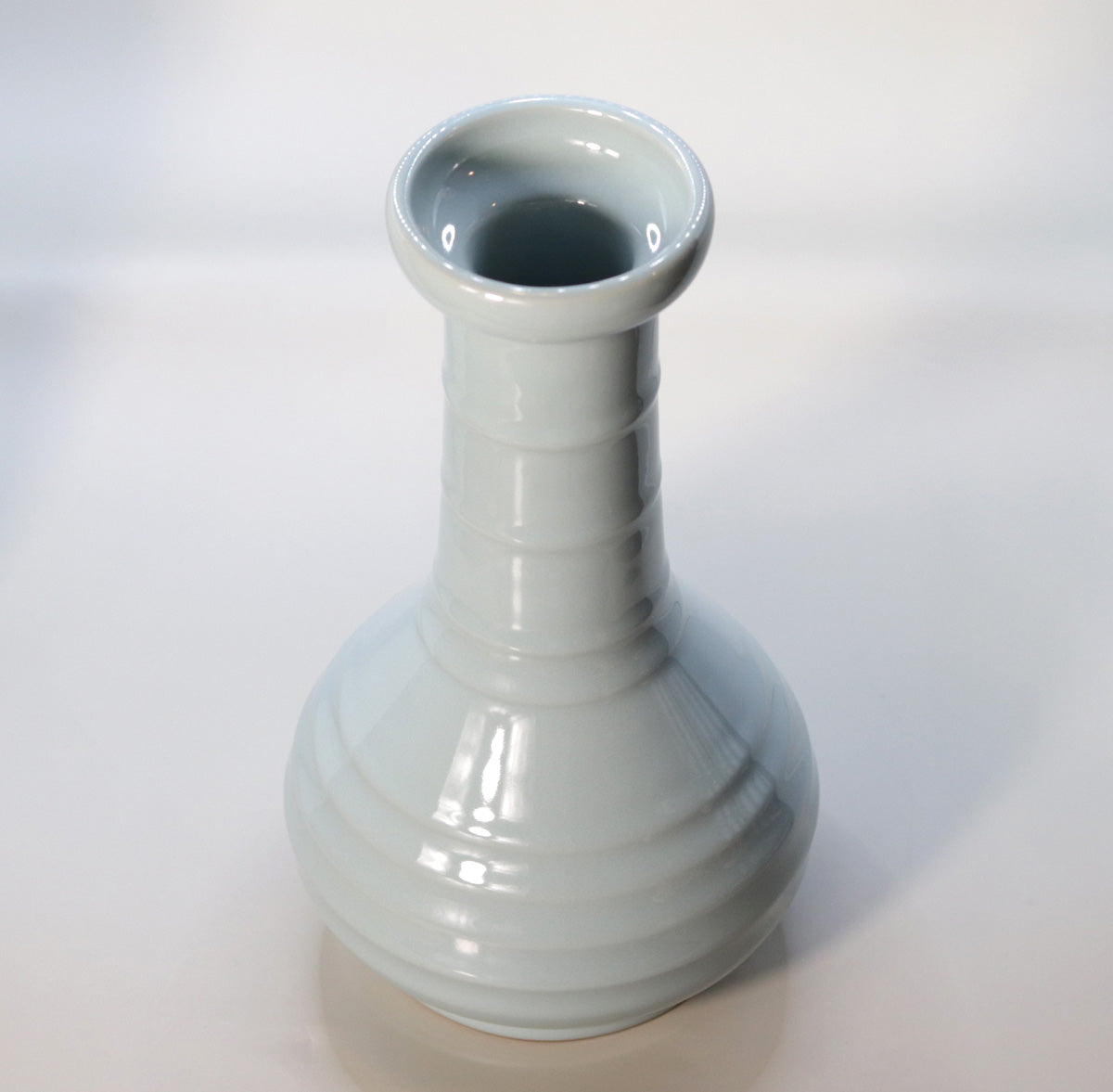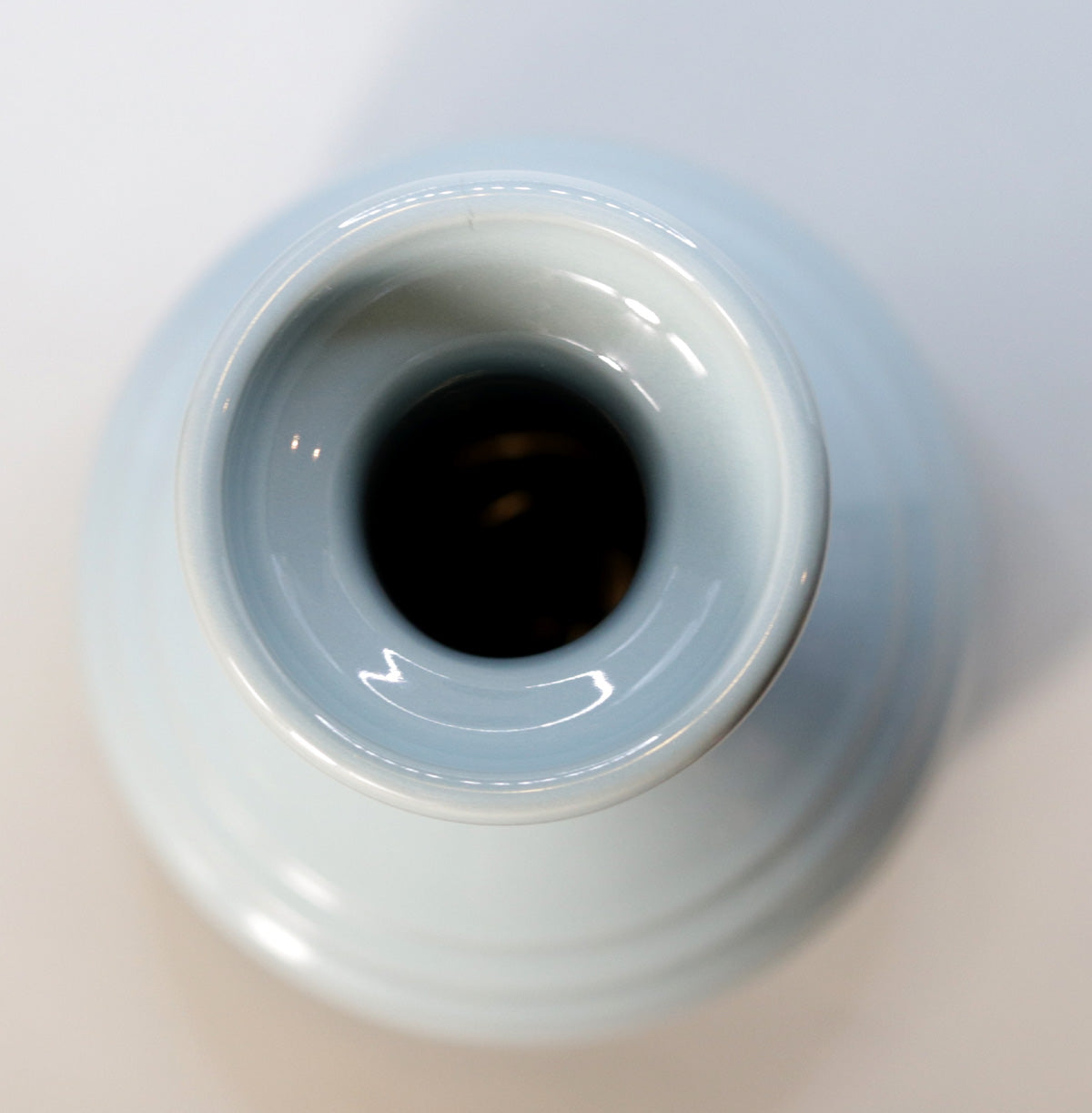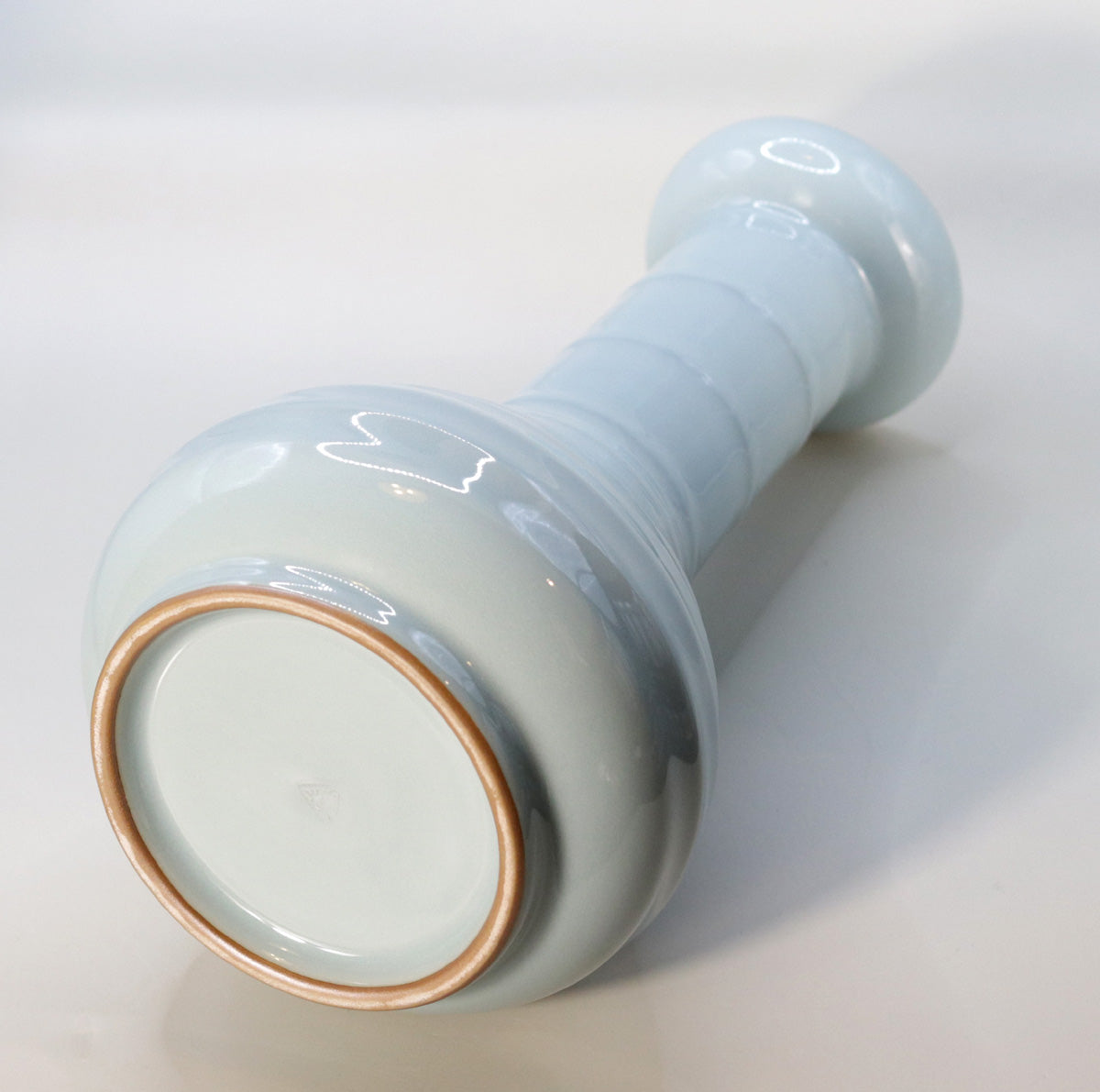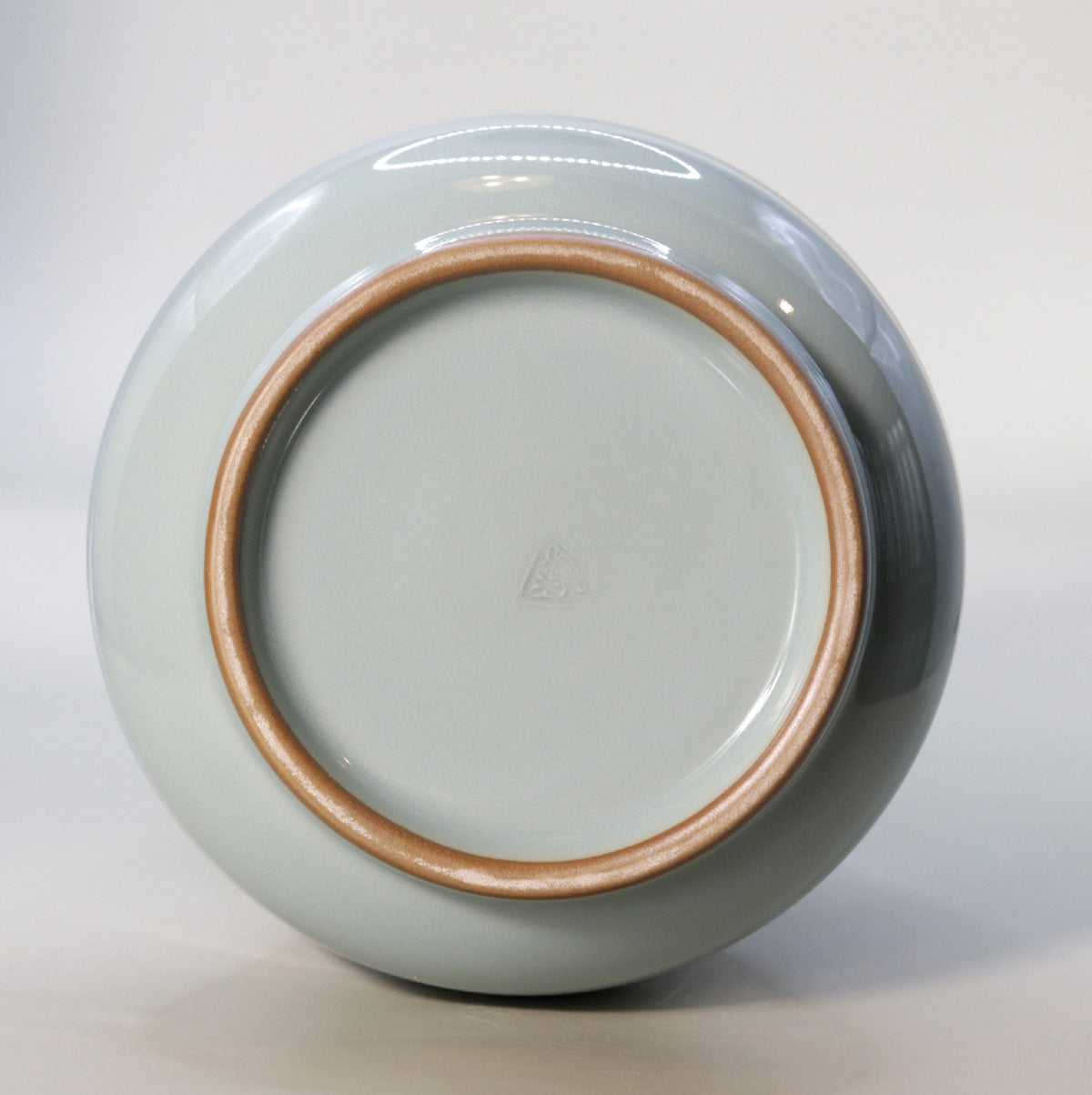Blue bamboo shoot vase (large) Suwa Sozan
Blue bamboo shoot vase (large) Suwa Sozan
Couldn't load pickup availability
Width: 14.2cm Height: 24.8cm
The "Celadon Bamboo Shoot Vase (Large)" was created by Suwa Sozan IV, modeled on the Kinuta Celadon of the Longquan Kiln of the Southern Song Dynasty, while also being in line with Japanese vase culture. As can be seen in the photo, the stepped ridges from the body to the shoulders are reminiscent of the nodes of young bamboo shoots sprouting from the ground. The smoothly rising silhouette, which changes angle slightly at each node, quietly suggests the life force hidden within the plant, while at the same time capturing the neat proportions that are characteristic of Southern Song Dynasty celadon.
Shape and form
Sectional structure of the body <br data-start="261" data-end="264">The body is composed of a taut, sectioned outline, and is designed to taper gradually from the bottom towards the aperture. This gradual convergence achieves both a visual sense of stability and a relaxed verticality.
Bamboo Node Carvings on the Long Neck <br data-start="366" data-end="369">The neck is also carved with a series of thin nodes, creating a rhythm reminiscent of bamboo culms. This harmonizes with the powerful nodes on the body and enhances the overall sense of unity.
Ring-shaped rim <br data-start="457" data-end="460">The rim is slightly turned outward and has a very shallow ring on the inside, so that the flowers are naturally drawn to the center when arranged.
Glaze Tone - The Depth of Sozan Celadon Passed Down from the First Generation
The pale jade color that can be seen in the photo is part of the lineage of "Sozan Celadon", which was perfected by the first generation Suwa Sozan after 25 years of trial and error. The iron contained in the clay dissolves during reduction firing, resulting in a highly transparent blue-green color. Of particular note are the slight pools of color that form on the ridges of the steps - thickly glazed areas are glazed over these areas, and the light casts a faint shadow, evoking the luster of young bamboo shoots covered in morning dew.
Functional beauty and a perfect match for the tea ceremony
When water is poured inside, the thick glaze causes the water's surface to be reflected on the walls of the vessel, giving it a soft glow. The stems of the flowers swaying in the water are visible through the glaze, creating a scene in which the vessel and the flowers become one.
Creating a sense of the seasons <br data-start="858" data-end="861">The unevenness of the nodes acts as a holding place for the flowers, such as the buds of spring, the arrowheads of summer, the wild chrysanthemums of autumn, and the wintersweet, creating a rich, three-dimensional effect even with a small number of flowers.
Historical background and significance of inheritance
The bamboo shoot-shaped vase was a design favored by the imperial court and literati during the Southern Song Dynasty, and in Longquan Kiln, combined with the transparency of celadon, it was considered a vessel shape that symbolized "signs of spring." The first Suwa Sozan transplanted that spirit and form to Japan and succeeded in restoring Kinuta Celadon. The fourth Suwa Sozan inherited the celadon color while pursuing a size and strength that is easy to handle in modern tea ceremonies, and in this piece, he fine-tuned the thickness of the rim and the fleshing of the joints to increase durability.
Artist profile and creative attitude
Suwa Sozan IV was born in Kyoto in 1970. He was trained by his father, Suwa Sozan III, and his mother, Nakamura Sotetsu XII, and took over the name of the IV in 2002. He continues to use a variety of techniques, including plaster molding and kneading techniques, while continuing the spirit of research shared by his first master. Instructed by his mother that "a work should have a story," he has entrusted this piece with the story of an auspicious omen, "bamboo shoots heralding spring."
Conclusion
The "Celadon Bamboo Shoot Vase (Large)" captures the elegance of Southern Song Longquan kiln celadon, while the delicate sense of form and glaze control of Suwa Sozan IV give it a freshness befitting a modern tea ceremony. The dynamism created by the stepped joints and the serenity of the clear blue - these opposing elements come together in a single vessel, making this a masterpiece that brings a breath of spring to the hearts of those who see it.
Share
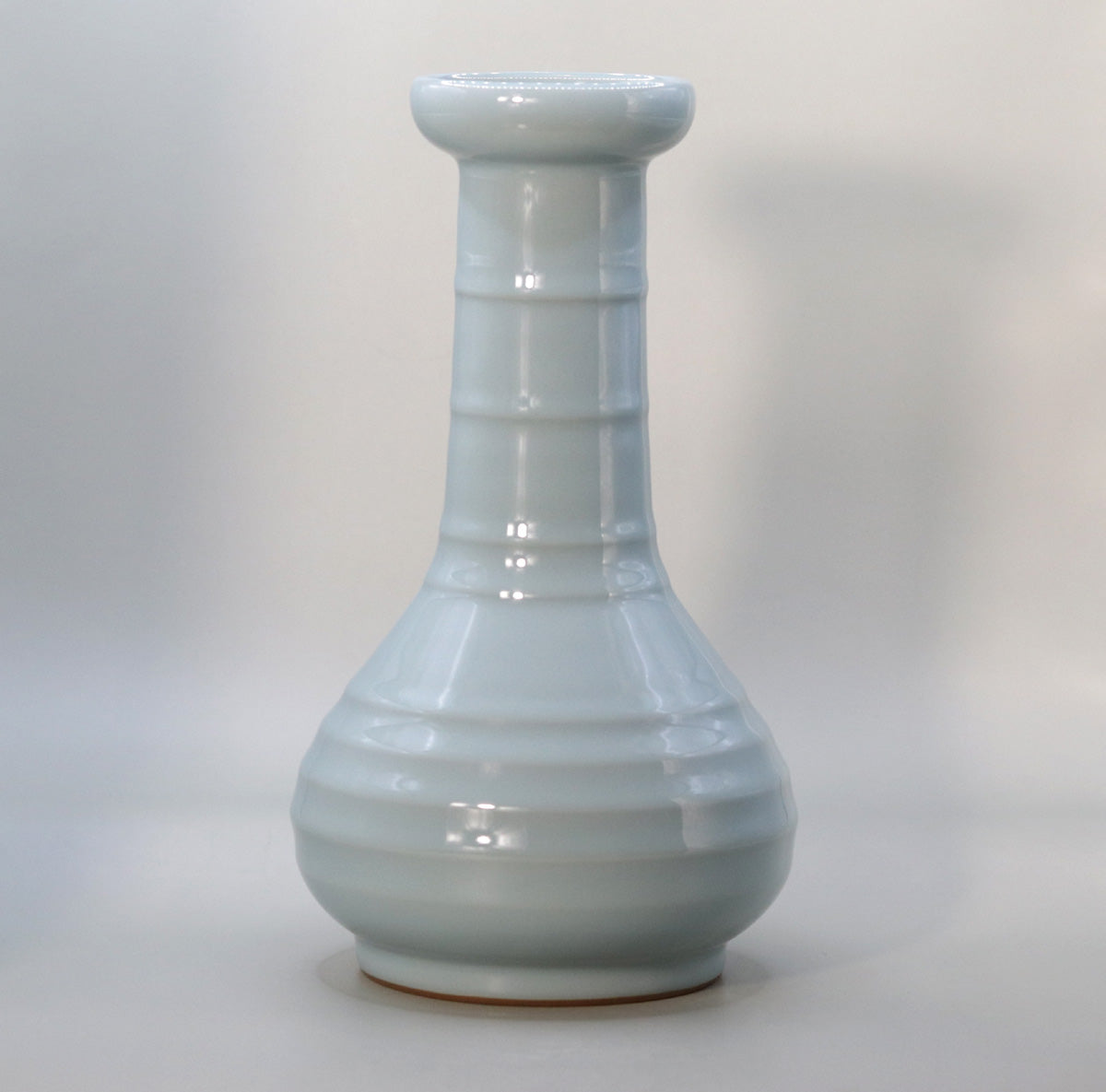

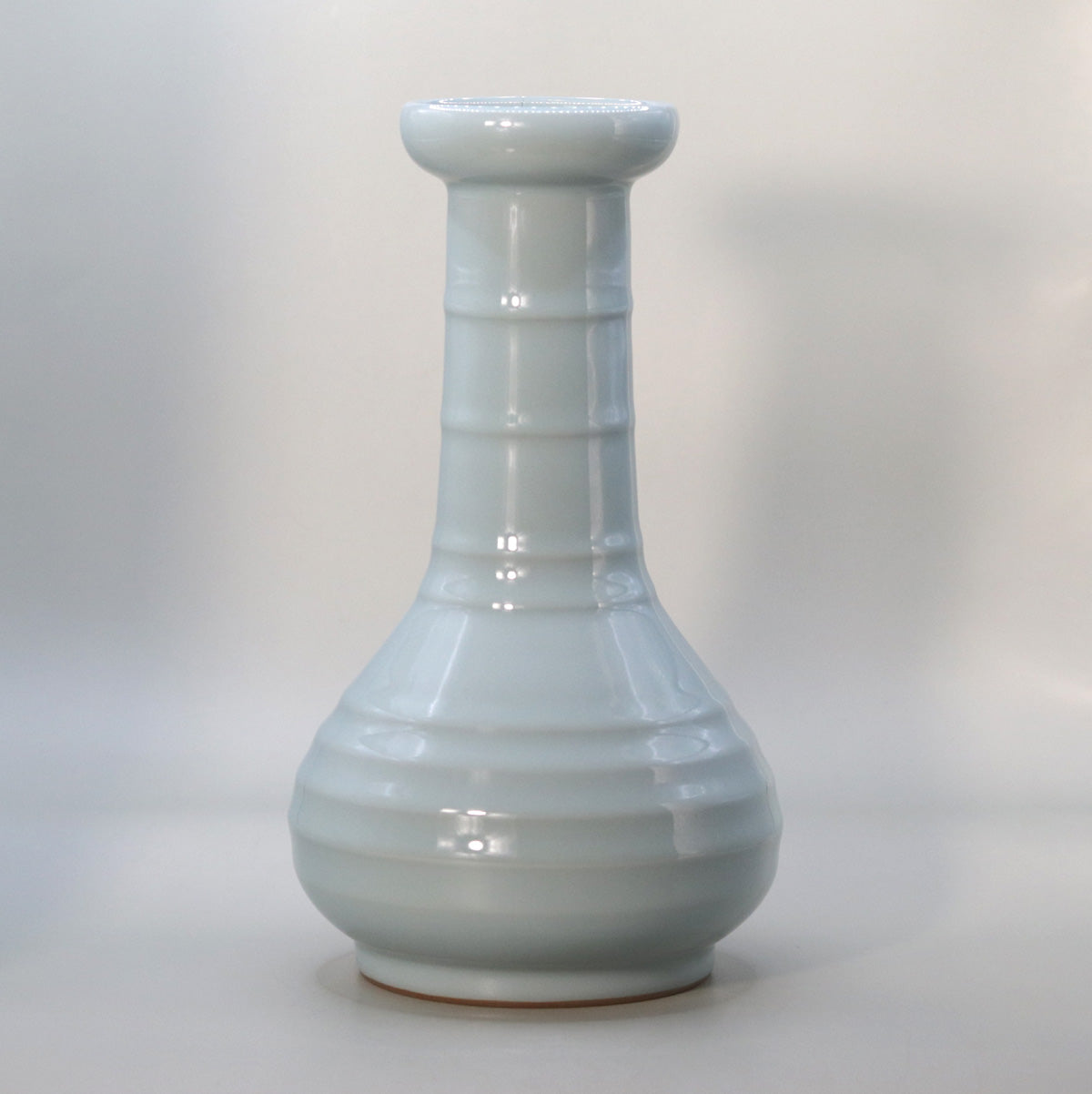
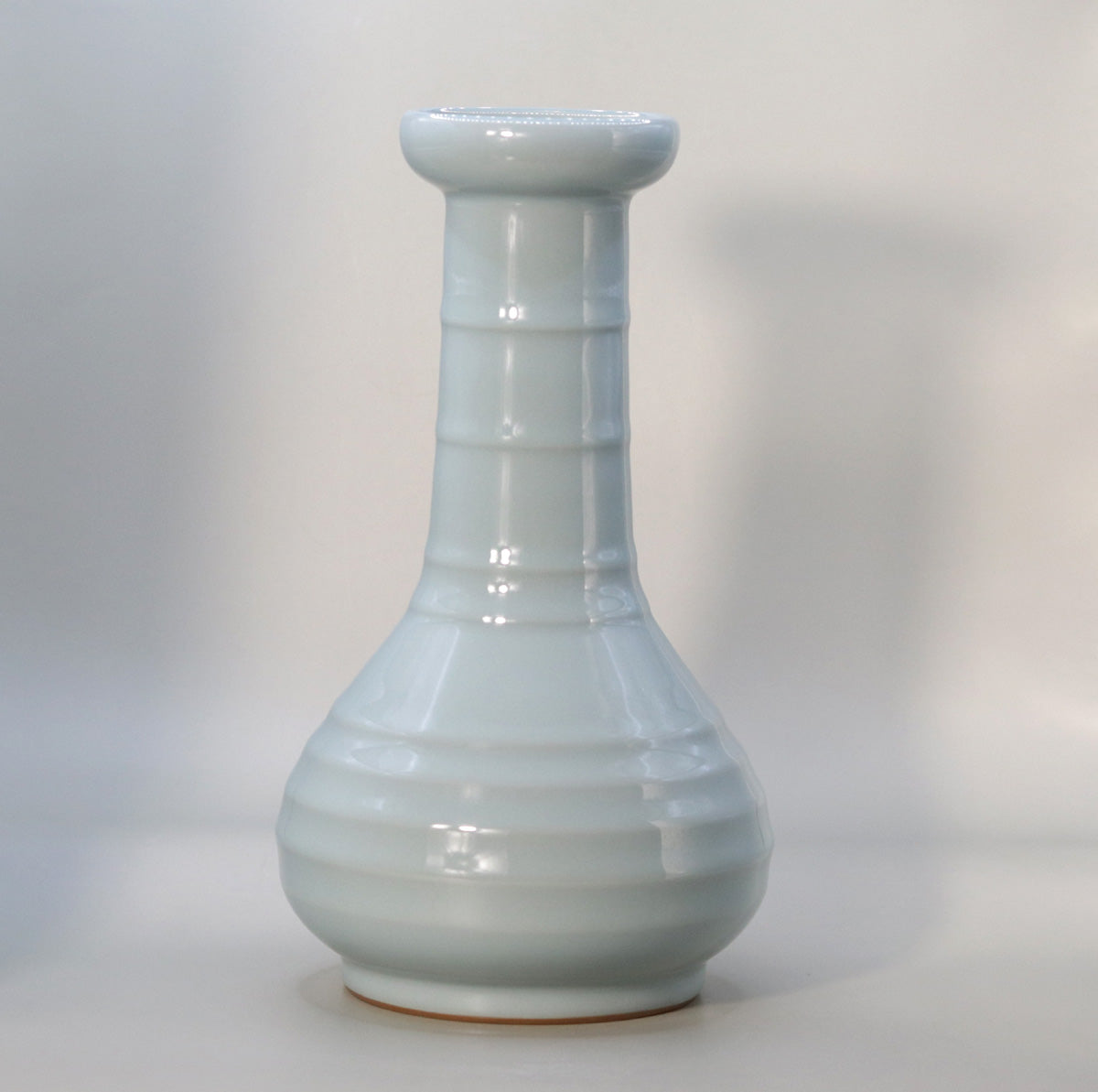
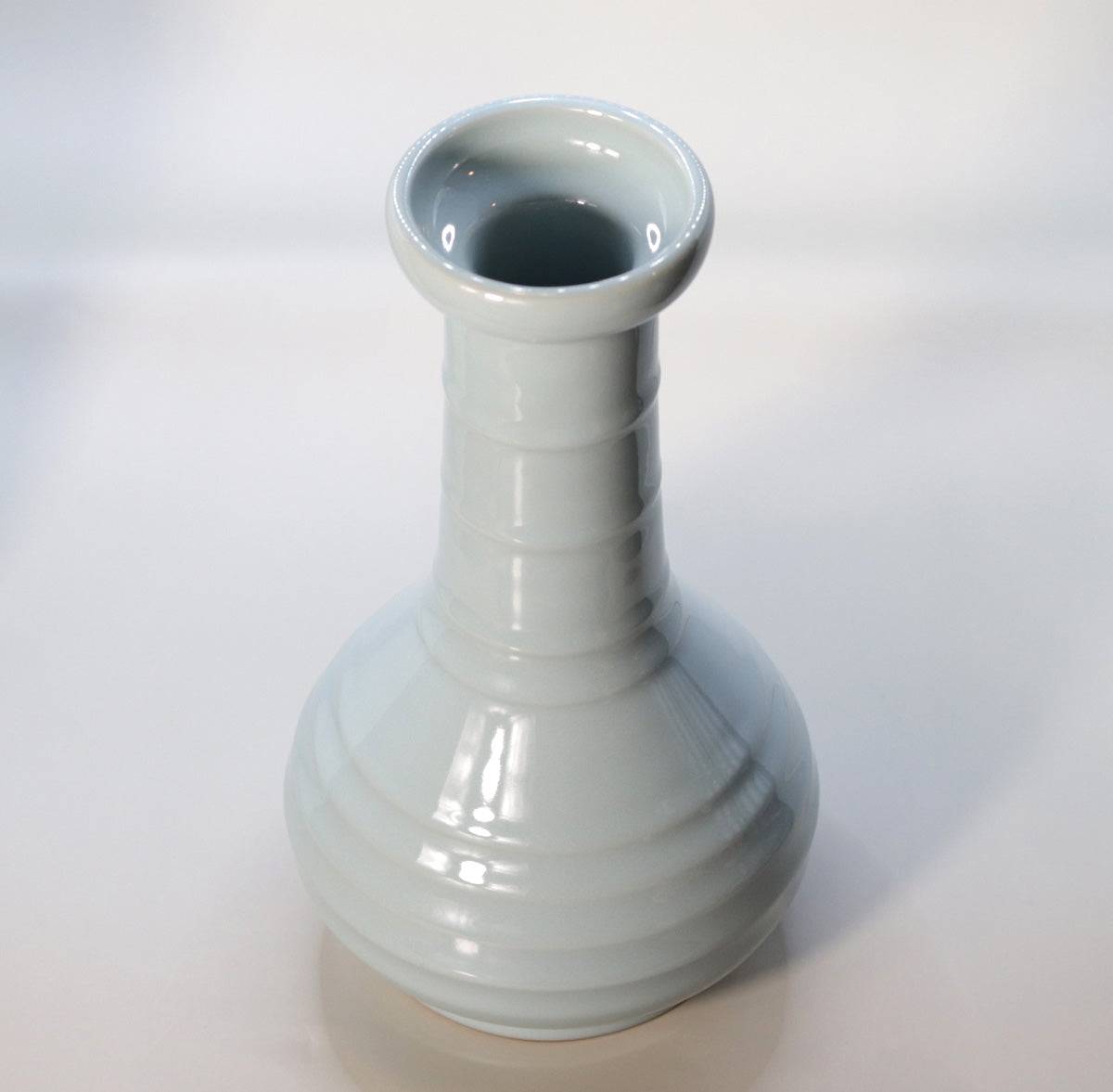


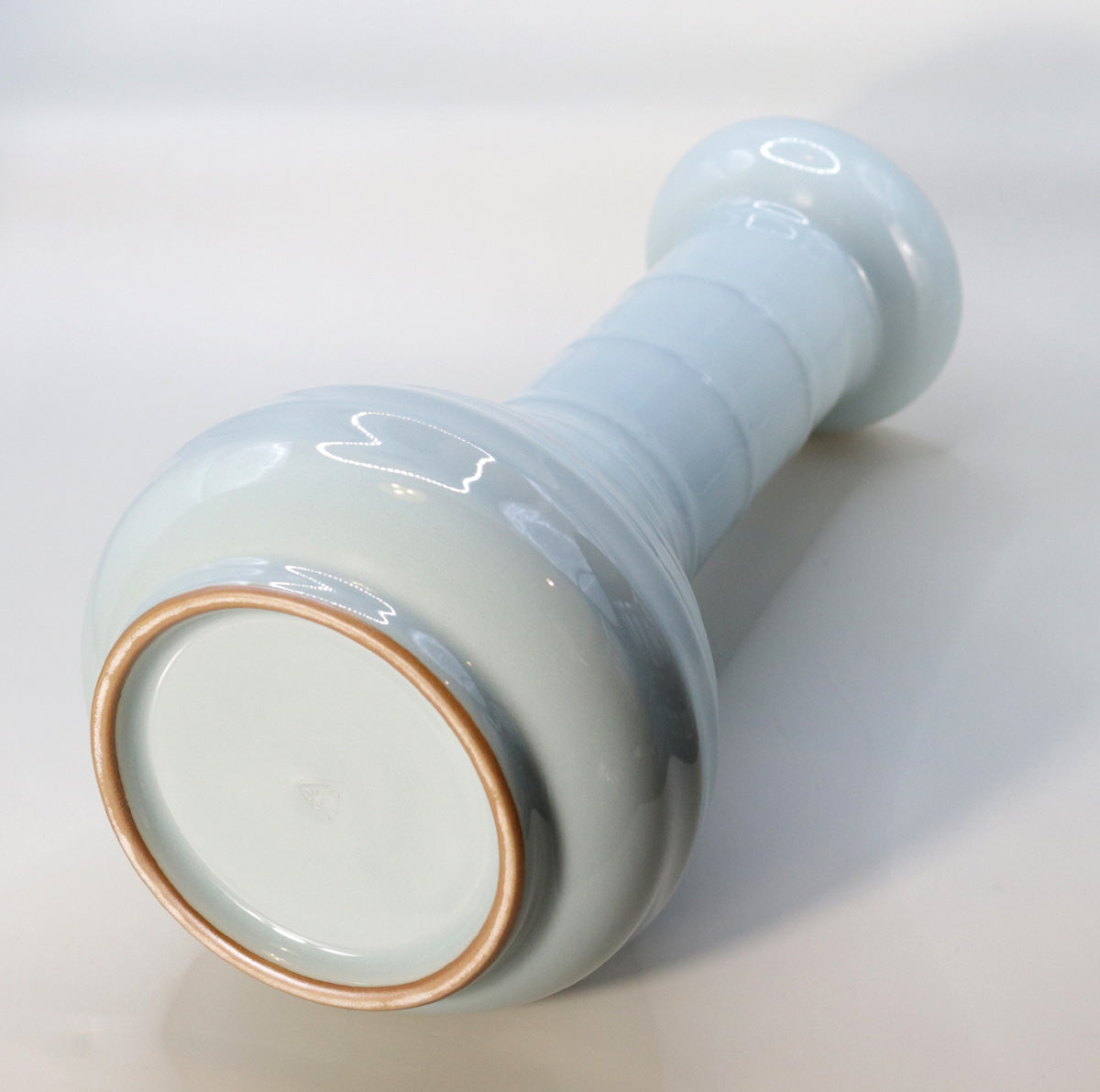
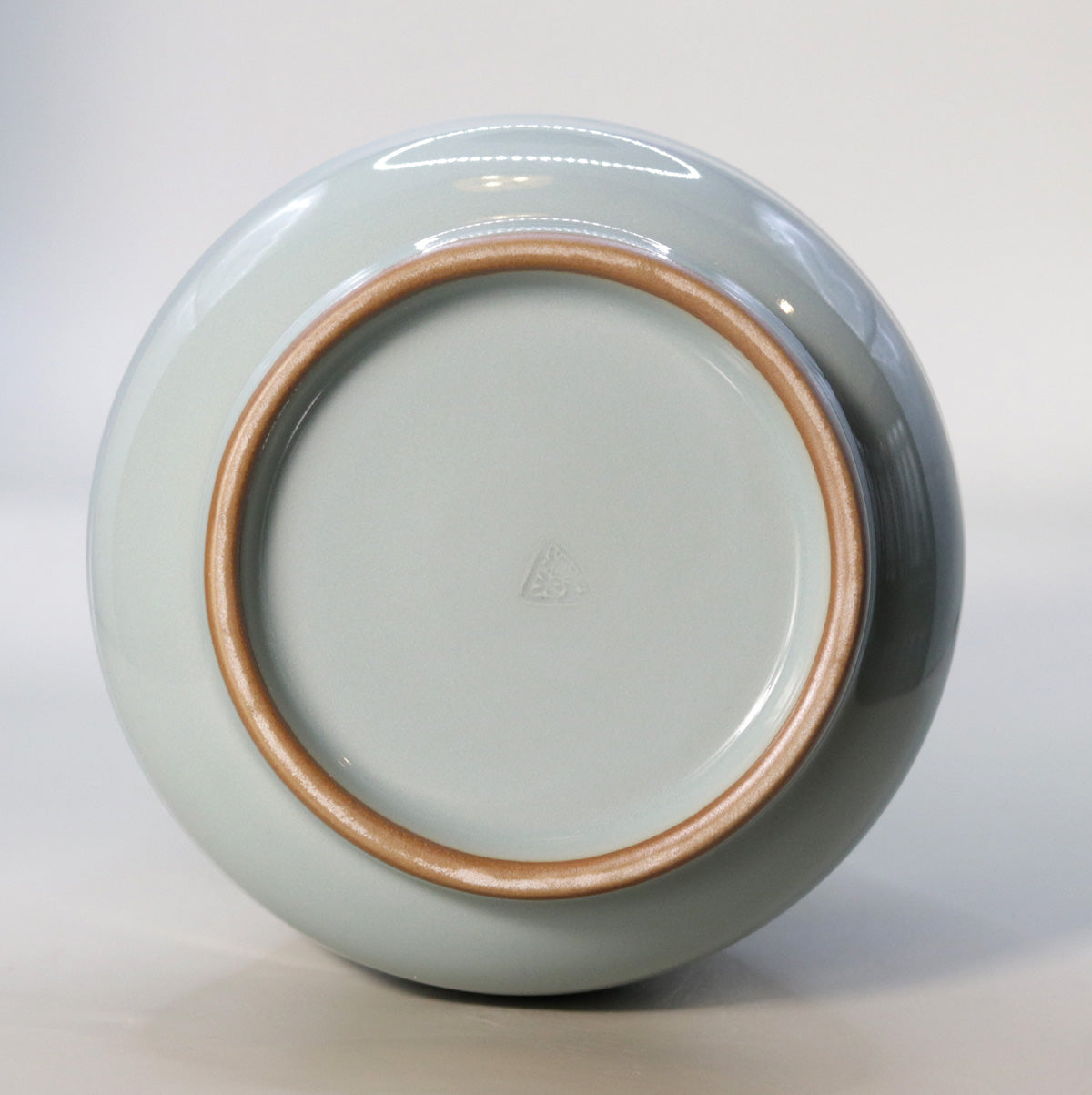
Multi-Column
-
[I will send it to you quickly and carefully]
We carefully package each product in a way that suits it best.
Also, delivery times vary depending on the piece (vessel, etc.).
Items that already come with a box will be shipped within 1-3 days of the order date.
For items that require a box to be made after your order, it will take approximately 30 days for production to be completed and then shipped.
In either case, once we have confirmed your order, we will contact you by email to inform you of the delivery date.
-
[Requests when purchasing pottery]
Even products that look the same may differ slightly in color, shape, size, etc.
The way the glaze is used, the power of the kiln, the firing method, the season, and the humidity also affect the appearance of the pottery.
Please understand the individuality of each piece of pottery and enjoy the unique warmth of handmade.

